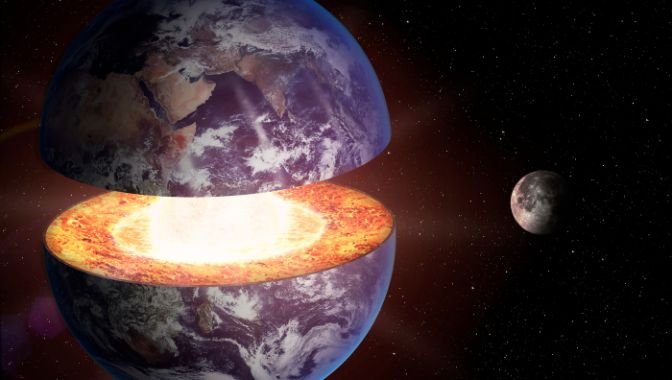A groundbreaking new study from researchers in the United States and China has revealed that Earth core stopped moving relative to the planet’s surface at times, as its rotation has significantly slowed.
Scientists Reveal Earth’s Core Rotation Has Slowed Dramatically
Using decades of seismic data from earthquakes, scientists confirmed that the core’s motion is not constant, as previously believed, but instead follows long cycles lasting about 70 years. In these cycles, the inner core slows down until it nearly syncs with Earth’s crust, creating the illusion that it has stopped. Afterward, its rotation gradually speeds up again, moving ahead of the surface before the process repeats.
Two layers make up the Earth’s core. A molten outer core that generates the magnetic field and a solid inner core of iron and nickel. Where temperatures soar to around 5,700°C. The outer core begins roughly 1,800 miles beneath the surface, while the inner core lies deeper, starting at about 3,200 miles down.
Scientists believe the slowdown may subtly affect the length of Earth’s days, though the changes amount only to milliseconds. Too small to notice in daily life. However, such fluctuations could influence precise astronomical measurements, satellite positioning, and even navigation systems.
Also Read $1 Million Luxury Yacht Sinks Minutes After First Launch in Türkiye
Some researchers also suspect links between inner-core dynamics, changes in the Earth’s magnetic field. And long-term climate variations, though further studies are needed to fully understand these relationships.
This discovery highlights how little is still known about Earth’s deepest layers. While scientists say Earth core stopped moving relative to the surface poses no immediate threat, it offers fascinating insight into the hidden forces that shape our planet’s evolution and its interaction with the atmosphere above.











